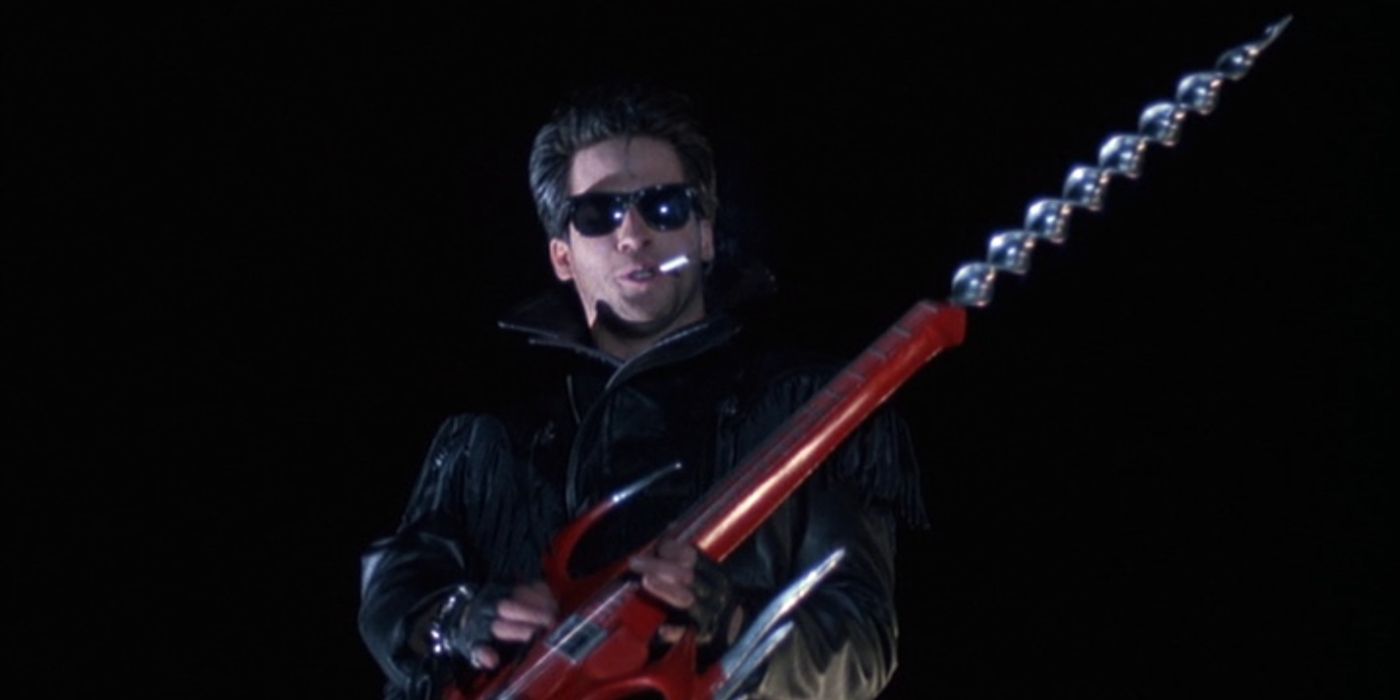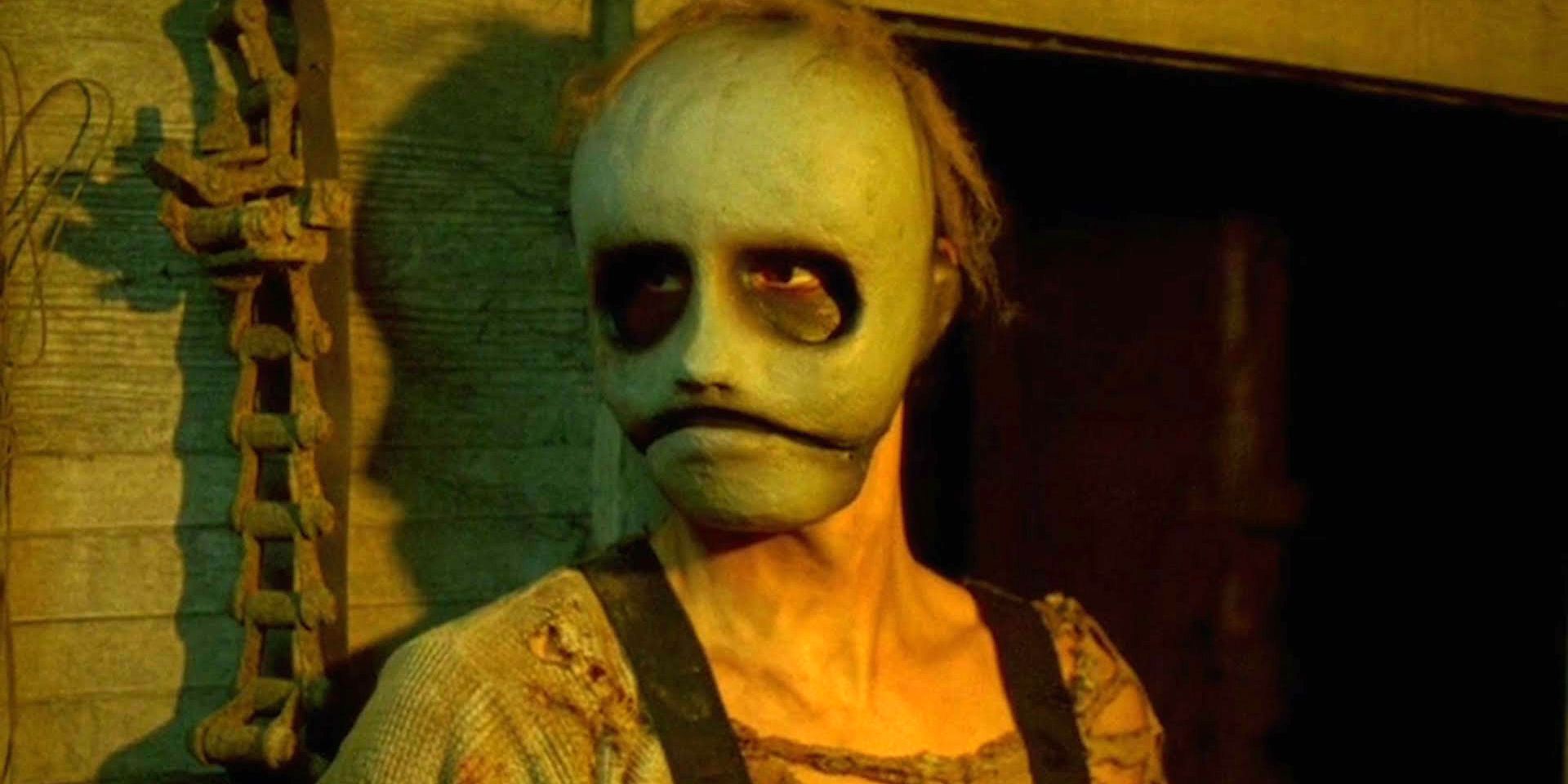In our previous discussion of the 1983 cult-classic Sleepaway Camp, we talked about how slasher films can fall into a trap of being overly self-important and stagnantly serious. Slashers are inherently goofy, even when played straight, and to pretend otherwise often leads to disaster. Of course, you can have serious slasher flicks, but even the most noteworthy among them like Halloween and Black Christmas still have elements of humor to them. Hell, even The Texas Chainsaw Massacre, which many regard as being the bleakest and most starkly macabre of all the icon late 20th-century slasher icons, was written and shot as largely a black comedy.
A slasher film can compensate for the natural ridiculousness of the genre and differentiate from the hundreds of other generic examples of the played-out tropes that they exhibit in one of two ways: First, like with Sleepaway Camp, a film can lean completely into the silliness its archetypes, stopping just short of becoming a full-on parody of itself. This is tricky, and can often result in a film that transitions into pretty much being predominately a comedy, with no horror elements left to really even consider it a slasher film anymore. Something like Slumber Party Massacre II, which pretty much abandons the played-straight (if campy) horror elements of the first film for a cheesy, musical farce. This isn’t necessarily a bad thing, but it does hurt a film’s overall claim to being a horror film in any real sense of the word by that point.

The other option is to go meta.
This is a trope that we began to see a lot of in the mid-to-late 90s, with Wes Craven outputs like New Nightmare and Scream really upping the genre-savvy, self-aware humor in horror, although there are a few examples even earlier than that. Jason Lives, for example, is the rare Friday the 13th film that seems perfectly aware of what it is and just how to lampshade its goofier clichés. These films break what was previously established as an unspoken rule in the genre: The characters can’t know about horror films. In a zombie movie, characters can’t know what a zombie is. Serial killers and monsters have to be taken at face value, with no previous reference point. This is mostly because it was generally assumed at the time that to violate this barrier of fourth-wall knowledge was to sap the film of tension, and potentially take the audience out of the story altogether.
But all of that was thrown out of the window in this brave new age of smart, metatextual horror. Characters would know about horror films and the tropes contained within, and would frequently reference them. The plots to these films would directly mirror and subvert the plots of well-known films in the genre. Even the killers themselves would model themselves after other horror villains, as was the case with killers Billy and Stu in Scream. In other words, the rules were out the window, and these more modern slashers could freely explore the limits of the genre in full.
Now, that isn’t to say that films like this suddenly started oversaturating the market. In fact, they remain relatively rare to this day, serving as notable standouts to the more traditional, narratively-unaware horror films that studios release in droves every October. I think this is mostly due to how difficult it is to write a meta film, horror or otherwise. There’s a fine line between tongue-in-cheek and completely pretentious, and it’s extremely difficult to walk that tightrope from a writing perspective. Rubber, for instance, feels a little too sure of its own smarts at times, and Michael Haneke’s devilishly sadistic Funny Games resorts to a blatant fourth-wall break in its third act, which always felt a little on-the-nose for my tastes.
But there have been others since the 90s that have succeeded wildly at deconstructing horror in its various forms. Cabin in the Woods, for instance, is a fantastically clever breakdown of what makes horror horror and why it’s always structured in such a stereotypical fashion. Tucker and Dale vs Evil lampoons the slasher genre in particular, inverting the usual villain-victim dynamic to comedic effect.

These are excellent examples of meta-writing in horror films, and are pretty well-known in the mainstream. Which, of course, is recognition they absolutely deserve. But there’s another satirical, deconstructive horror flick, that like Tucker and Dale also tackles slashers, that hasn’t gotten nearly as much attention. One that probably blows most other attempts since Scream out of the water, due mostly to its fresh, unique approach to meta storytelling. A little indie horror film, and one of my all-time favorites, called Behind the Mask: The Rise of Leslie Vernon.
While Cabin in the Woods plays its horror elements straight in-universe, leaving the meta-commentary a largely audience-level experience, Behind the Mask eschews this by directly addressing its lovingly-parodying subject matter onscreen. Within the world of the film, slasher icons like Michael Myers, Jason Voorhees, and Freddy Krueger are all real people. The events of their respective films are assumed to have occurred, to some degree, and they have a legendary, notorious status in the public eye.
Enter Leslie Vernon. Leslie wants to be a slasher. In fact, he wants to be the greatest slasher in history. So he offers a group of journalism grad students to follow him as he prepares for his debut night where he reveals himself to the public and cements himself as a terrifying, deadly urban legend. These young twenty-somethings follow Leslie as he shows them exactly how slashers do their job, breaking down and deconstructing all of the classic tropes in the genre with realistic, grounded explanations and demonstrations. Being a killer has nothing to do with supernatural powers or superhuman strength; It’s all in the preparation.

Killer survives being lit on fire or slashed? It’s because they’ve coated themselves in a fire-retardant/coagulant beforehand. Weapons seem ineffective against them? The axes and machetes laying around have all been pre-sabotaged. That thing where a killer seems to be always keeping up with their victims at a slow, walking pace? Just good cardio. Behind the Mask is as much a love letter to horror as it is a parody of it, with each of these breakdowns of traditional slasher tropes being presented in a sincere, loving manner. We also get some excellent cameos as well, from Freddy Krueger himself, Robert Englund, as Leslie’s nemesis (who’s styled after Donald Pleasence’s Professor Loomis from Halloween) to famed Jason actor Kane Hodder. This is a movie made by slasher fans, for slasher fans.
The film is shot hand-held style for its first two acts, modeling itself after a documentary. We follow everything from the POV of lead student Taylor and her camera crew as they follow Leslie through his day-to-day routine and preparations for his promising career as a masked lunatic. We see him establish his backstory, spreading rumors of his fabricated supernatural origins to his chosen victims. We see interviews where he explains the philosophical and psychological factors that go into choosing such a lifestyle, and why what he does is technically a public service. We also see interviews with a few of Leslie’s friends and mentors, as they themselves offer some perspective on what a killer is and why they do what they do. It feels like a Dateline NBC special, in the best way possible, with a sincere attempt at authenticity that grounds the story and makes it seem as real as possible.
Leslie is presented in such a charismatic, down-to-earth light that it’s impossible not to like him, despite the gruesome business he’s preparing for. He’s funny, he’s endearing, he’s wickedly intelligent, and he seems like he’s a perfectly normal, nice guy. Other than his aspirations of murder, obviously. The way he plays off of the grad students and befriends them almost instantaneously is so fun to watch that you often forget that this is a horror film. Actor Nathan Baesel is easily one of the most charismatic leads in a horror film ever, exhibiting a sort of bizarre mix of Jim Carrey and Michael C. Hall. It’s an absolute travesty that his career didn’t absolutely explode after this film.

All of this film’s joy and levity, particularly when it comes to Leslie Vernon, is all just a façade, however. It only exists, in a mastermind stroke from director Scott Glosserman, to lull the viewer into a false sense of security, only to pull the rug out from you in the third act. I won’t spoil it here, but the mocumentary style is thrown aside in favor of a straightforward journey into traditional slasher territory, which plays immensely well with all of the meta-groundwork that has been established previously in the film. Behind the Mask deconstructs the slasher film only to reconstruct it for its finale, a genius move that gives the film some much-needed darkness. Some people found the departure in the final act to be a disappointment when taken alongside the more subversive earlier style, but I think they miss the point. It keeps the film from being too self-absorbed and pompous about its takedowns of the genre, and keeps it firmly rooted in horror territory.
Plus, it’s just a lot of fun to watch.
Behind the Mask is pretty well-known among horror fans, but hasn’t seen a lot of recognition in wider circles, thanks to a limited release. But it deserves easily as much attention as Scream and Cabin in the Woods for being an excellent love-letter and playful satire of a subgenre which has gotten very, very stale over the years. Leslie Vernon is one of the most interesting and layered horror characters in decades, and is one that I desperately want to see more of.
If you ever come across this movie, either on streaming or in a Blu-Ray bargain bin somewhere, be sure to check it out. I guarantee you’re in for a treat,
Already seen Behind the Mask and think it’s overrated? Have another meta-horror flick you think blows it out of the water? Let me know in the comments!
And, as always, Happy Halloween!

